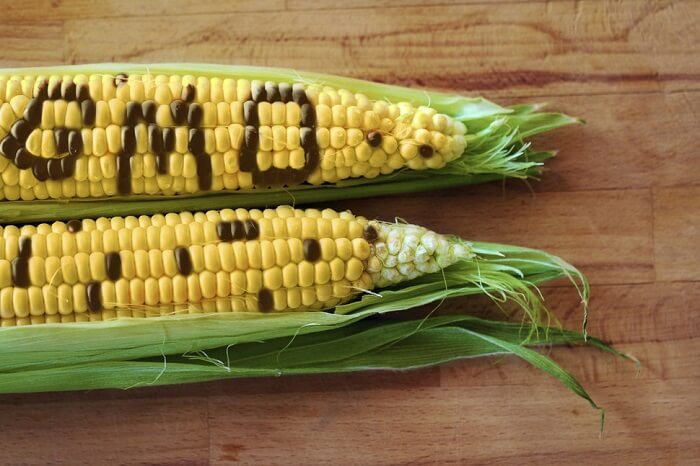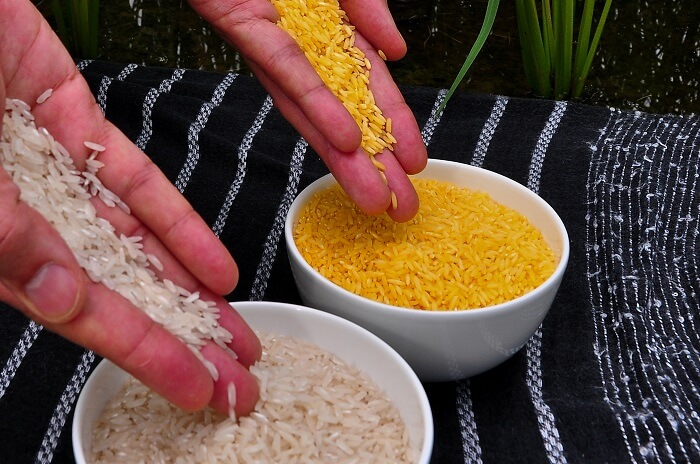A genetically modified organism or GMO refers to any organism that has had its characteristics modified through changes to its DNA. Most of the time, GMO refers to food with genes from another species — which may be a plant, insect, animal, virus, or bacteria — added to its DNA. GM foods are usually designed to reduce prices, increase crop hardiness or even improve nutritional content.
As a consumer, it’s important to understand the pros and cons of GMOs before making a decision as to whether they should have a place in your diet or not. Read through to learn the facts about this type of organisms.

10 Most Important Pros and Cons of GMOs
#1. GMO Crops May Require Less Land
No discussion of the pros and cons of GMOs can start without considering their ability to produce higher yields. Many GMO crops are engineered to grow more food from the same amount of land. GMO crops can help meet the demands of a growing population.
According to a study by the University of Illinois, total food production of wheat, soy, rice, and corn needs to increase 87% to meet the expected population of 2050. Without increased yields, food shortages can occur as soon as 2030. Since the introduction of GMO crops in the U.S., corn yield has gone up 37% while soybean yield has increased 21%.
#2. GMOs Help Reduce Food Prices
While food costs have been on the rise over the last decade, GMO foods have helped reduce the cost of food and keep prices lower. According to one scientific analysis, corn-based products would be at least 6% more expensive. Moreover, soybean-based products would be at least 10% more expensive without GMOs.
The main reason GMOs increase production is they are designed to resist insects and weeds better. This results in more crops being grown without the dangers or cost of pesticides.
#3. GM Crops Can Reduce Pesticide Use
The use of pesticides is a major health concern, according to the EPA. Countless studies have linked pesticides to Alzheimer’s disease, cancer, birth defects, and damage to the endocrine, reproductive, and nervous systems. Most foods in the United States and many other countries are grown with pesticide use.
This is another area in which GMOs can help. It can be easy to focus on the downsides of genetic modification when comparing the pros and cons of GMOs. Nonetheless, research showed that GMOs reduce pesticide use by 37%.
#4. Genetic Modification Can Increase Nutritional Value

One of the primary reasons why genetically modified food was created is to increase its nutritional content or value. Depending on the genes, selecting and modifying a food can decrease or increase vitamin, fatty acid, and mineral content. Golden rice is one example of a GMO that has done this. Golden rice has been changed to have a higher amount of vitamin A, according to the Discovery Eye Foundation.
#5. GM Crops Require Less Water
Agriculture accounts for up to 90% or more of water consumption in the United States. Along with the use of a natural resource, water use also adds to the cost of the food we buy as consumers. Droughts can also mean costly disasters for food production and famine in many parts of the world.
GMO foods use dramatically less water than their non-altered counterparts and handle drought better. Researchers believe GMO crops help control climate change, high heat, and severe drought.
#6. GMOs Can Pollinate and Spread
There is concern that genetically modified crops can contaminate other fields and spread engineered plants, potentially even eradicating natural plants. While the biotech industry usually says that GMO crops can be safely contained and kept separate from organic fields, organic farmers have reported widespread GM contamination from GMO crops.
[amazon box=”1420507222″]
#7. Additional Herbicides May Be Used
While pesticide use drops when pest-resistant GMO crops are created, the flipside is most GMO crops are designed to be tolerant to herbicides. This allows farmers to use herbicides to kill weeds in fields without killing the crops.
Researchers at the University of Virginia recently conducted the largest ever study on GMO crops and pesticide use. The team found that GMO soybean farmers use 28% more herbicide than non-GMO farmers. On the other hand, farmers used fewer herbicides with other types of GMOs as well.
#8. Crop Diversity Can Be Threatened
A common reason people are opposed to GM crops is the genetically modified genes may spread to other crops. This way, they can threaten agricultural diversity. Reduced diversity can have a direct impact on the ecosystem and affect the dynamics of many organisms, including animals, insects, and bacteria.
#9. Most GMO Crops Are Legally Protected
When comparing the pros and cons of GMOs, you can’t overlook the fact that the vast majority of GMO crops today are patented and trademarked with legal protection. This means farmers who use these crops may need to sign an agreement to grow that GMO product exclusively. Farmers that don’t take necessary steps outlined in their contract can be sued. Farmers have even been sued because their GMO crops spread outside of their field due to natural pollination by bees, even though the farmers did not plant the seeds.
#10. GMO Foods May Not Be Labeled

It’s reasonable for people who want to avoid GM foods to be able to do so through food labels. In Europe, the European Commission requires that all GMO foods be labeled as such for consumers. There is no federal mandate to label GMO foods in the United States, however. This can make it difficult or impossible to know when you’re buying GMO foods.
Corn and soybean are the top GM crops in the United States. They serve as the base food in a wide variety of products, including vegetable oil and high fructose corn syrup. Corn-based products can include yogurt, toothpaste, and sugary soda.
[amazon box=”1573929964″]
Most GMO corn is used to feed livestock. This means corn-fed beef and chicken is rarely GMO-free unless the livestock was raised on organic feed.
Final Word
While genetically modified food is viewed as controversial, scientific evidence has overwhelmingly shown that GMO crops are neutral or beneficial to the environment. Evidence also shows GM foods have the potential to solve many global problems like malnourishment, food shortages, drought, pesticide use, and more.
How do you feel about GM foods? Please share your thoughts on these pros and cons of GMOs and whether you think this technology is a good idea for our planet.
